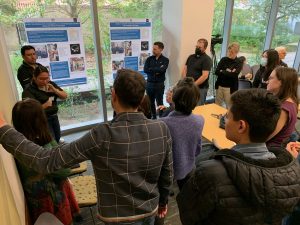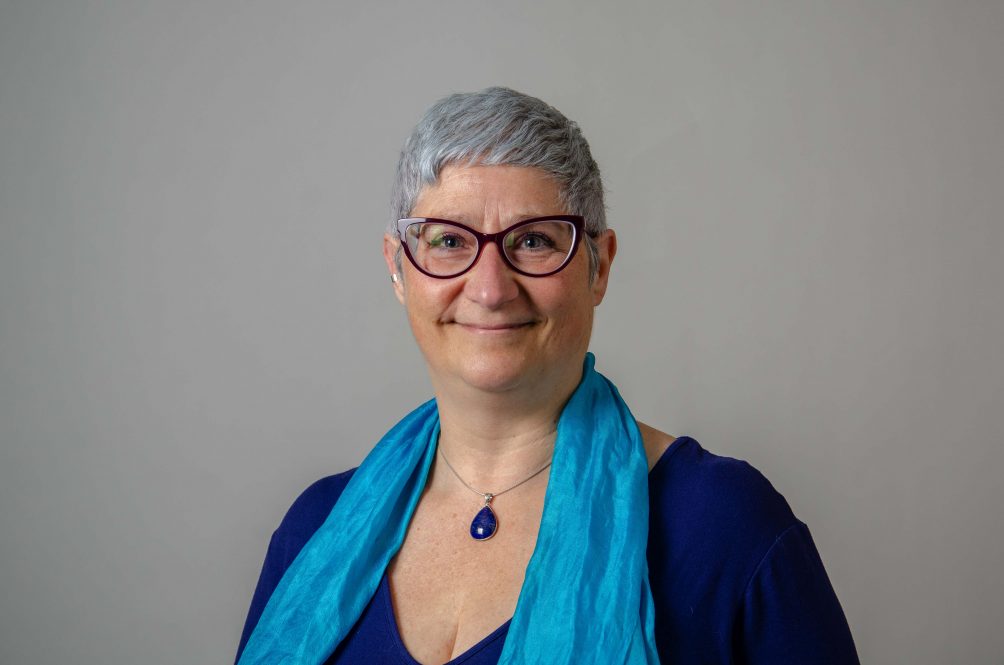“Most of the time that you hear about the life cycle of languages in the world, they’re dying, because their habitats are going away. The communities who speak those languages are assimilating into a more majority language,” says Marie Coppola, professor of psychological sciences and linguistics.
“You rarely hear about new languages forming, especially languages that don’t have a lot of contact with other existing languages.”
But that’s what happened in Nicaragua in the late 1970s, when students enrolled at the country’s newly established centers for special education began communicating with each other outside of class. These students, who previously had no contact with other deaf people, generated their own sign language organically.
Lengua de Señas Nicaragüense (LSN, also known as Nicaraguan Sign Language) would go on to become recognized as one of Nicaragua’s official languages in 2009. Because of its newness, it is the only language in the world that researchers have been able to study from its beginnings, with the very people who first created it.
This remarkable feature is what motivates Coppola to hop on a plane to Managua every year to follow up on the linguistic studies she began with Nicaraguan signers in the 1990s. Part of the research project, she says, is working closely with a group of Deaf Nicaraguans as they learn to collect language data and be involved in documenting their own language, “a goal that we all share.”

While LSN is an established language in Nicaragua, it is used only by those individuals who become part of the Deaf community by attending school with other deaf children or participating in their local adult Deaf association. The vast majority of deaf Nicaraguans are not part of that community, and instead develop their own personal systems of signs, known as “homesign,” to communicate with their families and the world around them.
“It turns out that the younger you are when you begin interacting using a homesign, the better you understand it, which is characteristic of everything we know about first and second language acquisition,” Coppola says. “Homesigns are linguistic systems, and the properties they exhibit are linguistic properties. So while they may not have all of the properties we see in other systems of language, we can see from the way that homesigns are acquired how biological maturation affects your ability to create and learn a wide range of linguistic structures.”
Comparing the linguistic structures of LSN with those of homesign, Coppola’s current research explores how having access to a linguistic community shapes the development and acquisition of language. She has found that signers in the LSN community, through natural, everyday interactions, were able to develop certain linguistic features, like recursion, that are found in (almost) all of the world’s languages.
“All the community signers, because they interact with other signers who nearly always understand what they’re saying, will present the information in this way [using recursive structures]. But homesigners are very unused to people understanding them; their pragmatics are developing in a very different context,” she explains. “They can’t assume that their conversation partner can make the right connections between their words based on these kinds of embedded structural links within a sentence. It’s like the homesigner and their conversation partners are navigating the meanings in a sentence using different maps.”
According to the World Federation of the Deaf, 70% of deaf people worldwide do not have adequate access to language, a phenomenon known as language deprivation. Language deprivation can take place when resources, like early diagnostic tests and deaf-inclusive schooling, are not available to parents of deaf children. It can also occur when parents do not receive appropriate information or support regarding the benefits of using sign language to communicate with their children at home, even alongside spoken language, or when deaf children are enrolled in programs that do not provide adequate exposure to communication that is accessible to them, such as exclusive focus on spoken language with a child who does not hear it.

Many misconceptions about sign language and deaf education persist, contributing to the pandemic of language deprivation. Deaf advocacy and research seek to dispel them. Coppola is excited to report how some of her colleagues recently shattered some of these myths, including the idea that hearing parents are not able to learn sign language quickly enough to support the linguistic development of their deaf children (they are) and that learning sign language could hinder a child’s ability to grasp spoken English (it doesn’t).
Coppola is hearing and is a child of Deaf adults (CODA). She is adamant that the field should embrace the scholarship of Deaf academics, who face “so many barriers to acquiring the credentials that you need, to do this research and to get the funding for this research.” To this end, she has collaborated with and mentored prolific Deaf scholars like Annemarie Kocab, an incoming assistant professor at Johns Hopkins University.
“I’ve benefited deeply from Deaf culture and the Deaf community from the day I was born,” Coppola says. “I feel a tremendous responsibility to use my time in a way that can support the Deaf community.”
This passion has translated into several extracurricular pursuits for Coppola as well. She recently helped organize the second SignFest on the UConn Storrs campus, which saw sign language researchers and students from across the Northeast gather for a full day of research presentations and networking. UConn was a natural site to host the conference, with its prominent sign language experts including Coppola and Diane Lillo-Martin.
Through future SignFests and other events, Coppola hopes to continue developing a regional sign language research community.
“We have a lot of new young people getting involved, especially Deaf people,” she says. “I’m really looking forward to learning about all the ideas people have.”



